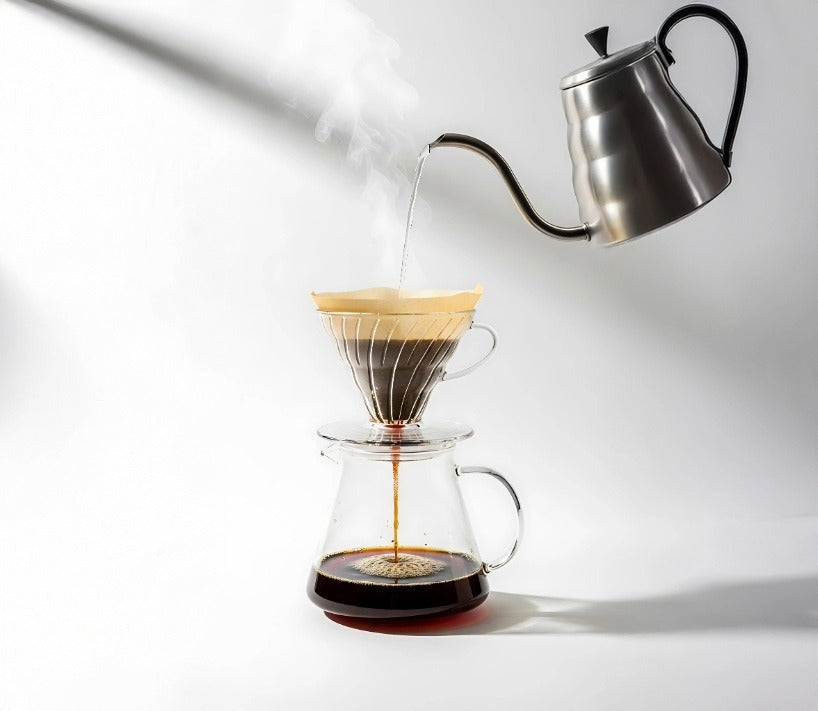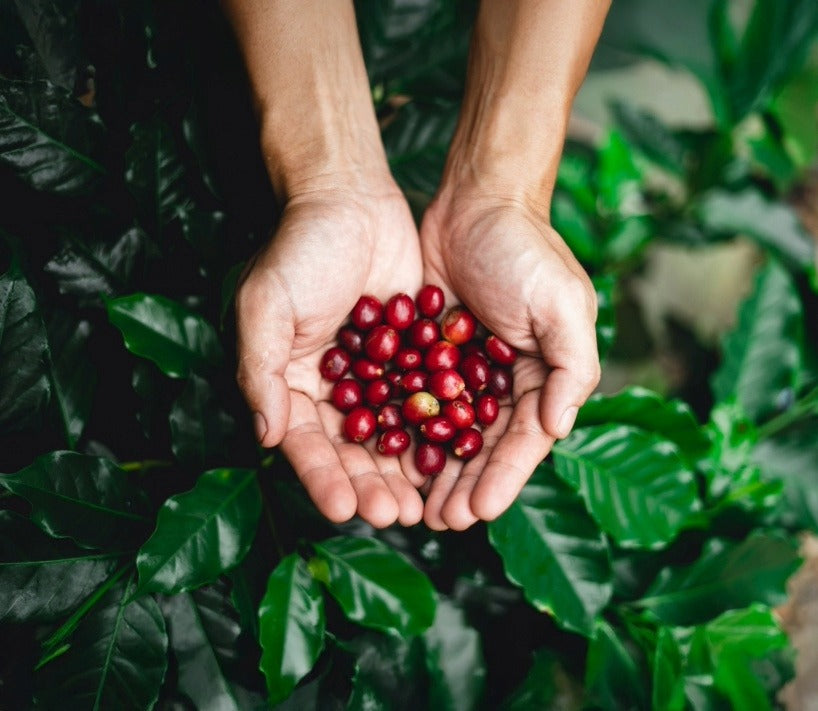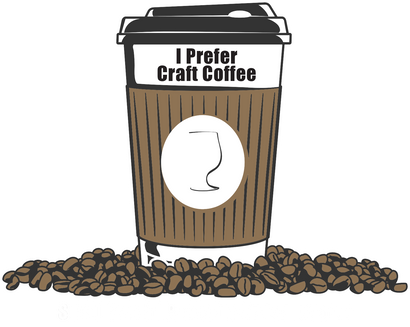Order Coffee Online: The Ultimate Guide To Craft Coffee Online!
July 11, 2025 4 min read
Order Coffee Online: The Ultimate Guide To Craft Coffee Online!
—A slightly irreverent, totally transparent guide for bean-obsessed humans everywhere
“Ever slam the order coffee online button at 2 a.m. only to receive beans that taste like the inside of grandma’s attic?”
Yeah, me too—before I learned how to sift the legit specialty roasters from the “slap-a-label-on-warehouse-coffee” crowd. Grab your favorite mug: we’re diving into the nerdy—but crucial—details that separate “meh” from mind-blowing when you buy beans on the web.
1. The Deep Dive (a.k.a. why your next cup depends on five nerdy details)
1.1 What Exactly Is “High-Scoring, Q-Graded Specialty Coffee?”
Q-grading is the Specialty Coffee Association’s version of Olympic judging—trained tasters score green coffee on a 100-point scale. Anything 80+ earns the coveted “specialty” badge, and the top specialty coffee online routinely clocks 84–90+.
Why you care:
-
Predictable Quality: Scores eliminate mystery. A 86-point Ethiopia is objectively brighter and cleaner than an 80-point blender lot.
-
Flavor Transparency: Flavor notes (think blueberry pie or caramel fudge) become more than marketing fluff; they’re measured.
-
Price–Taste Alignment: You’ll know whether that $26 bag is justified—or daylight robbery.
Quick sniff test: If a website never mentions Q-scores, keep scrolling. (“Trust me, bro” is not a grading system.)
1.2 Electric Air-Roasting vs. Gas Drum Roasting
| Feature | Electric Air-Roast | Gas Drum Roast |
|---|---|---|
| Heat Transfer | Hot air suspends beans—no scorching surfaces | Beans tumble against heated metal |
| Flavor Clarity | Crisp, origin-driven flavors; less baked “roast taste” | Heavier body, risk of smoky notes |
| Uniformity | Constant airflow = even development | Hot spots, charring if airflow is poor |
| Emissions | Zero fossil fumes; cleaner cup | Combustion gases mingle with beans |
| Cleanup & Maintenance | Less oil buildup; easier allergen control | Smokier environment; more residue |
In plain English: electric air-roasting gives you cleaner, sweeter cups—think HD TV versus standard definition. If you’re chasing the freshest craft coffee online, look for “fluid-bed,” “air-roasted,” or “electric” in the roast specs.
1.3 The Peak Freshness Guarantee—Why Roast-to-Order Matters
Most e-commerce coffee is roasted weeks before it ships. Not here. I roast, degas, package, and ship after you order—sometimes the very same afternoon (barista cape optional).
Why it matters:
-
Aroma retention peaks within 24–96 hours of roast. Delay equals dull.
-
CO₂ off-gassing drives flavor change; controlling the timeline ensures you experience the intended profile.
-
Longevity: Fresh beans stay vibrant longer in your pantry.
So when you’re hunting the best coffee to buy online, stalk the roast date first—discount codes second.
1.4 How to Vet an Online Roaster (Checklist)
-
Transparency page – Q-scores, origin details, processing method. No detail? No deal.
-
Roast date shown before checkout – Critical for the best coffee bean delivery.
-
Brewing guides & support – Are they educating or hard-selling?
-
Shipping logic – Free shipping thresholds are nice (best coffee online free shipping), but fast shipping trumps “free & slow.”
-
Subscription flexibility – Skip, swap, or cancel easily? That’s the hallmark of the best coffee subscription online.
Pro tip: Message the roaster a nerdy question (“What’s the water activity on that natural Ethiopia?”). Speed and quality of reply tell you everything about their service.
1.5 Fresh On-Page Elements Every Legit Coffee Store Shows
-
Flavor wheels, icons, or educational blogs (free knowledge is power)
-
Brew method badges (espresso-friendly, filter-perfect)
-
Video snippets of roasting or cupping sessions
-
Customer brew-log photos integrated via Instagram feeds
If the site feels like 2010, odds are the coffee’s stuck there, too.
2. Your 5-Point Action Plan to Never Drink Stale Coffee Again
-
Front-Load Your Search: Type “order coffee online high Q-score air-roasted” next time Google beckons. Watch the fluff disappear.
-
Scan for the “Roasted On” Date: It should jump off the product page before the “Add to Cart” button.
-
Verify Roast Method: Seek “electric air-roasted” or “fluid-bed”—your shortcut to cleaner flavor.
-
Prioritize Q-Score Transparency: 84+ if you want dazzling acidity; 86+ for fruit bombs; 90+ for “phone-a-friend” bragging rights.
-
Lock in a Flexible Subscription: The best coffee subscription online lets you control frequency, bag size, and roast style—without hostage tactics.
Put those five steps on your fridge and you’ll sip café-level goodness at home, every time.
Frequently Asked Questions
Why does “roast-to-order” trump “same-day shipping” from a warehouse?
Roast-to-order guarantees beans leave the roaster within hours of being roasted, not weeks. Even expedited shipping can’t resurrect flavor lost to time.
Is electric air-roasted coffee really that much cleaner?
Yes. Because beans never touch a hot metal surface, you avoid scorching oils and smoky residues, preserving delicate aromatics.
How long should I wait after roast before brewing?
24 hours for espresso (extractions need gas to settle), 12–24 hours for filter methods. Peak flavor window typically lasts 2–3 weeks in a sealed bag with a one-way valve.
Do higher Q-scores always taste better?
Taste is subjective, but higher scores correlate with increased sweetness, clarity, and complexity. Think of it like wine ratings; a 90 rarely disappoints.
What grind size should I choose for my “best craft coffee at home” setup?
Scale of beach sand (espresso) to kosher salt (French press). When in doubt, start medium-fine for pour-over and adjust.
Final Sip
Ordering coffee online doesn’t have to be a leap of faith. Armed with Q-scores, electric air-roasting intel, and a roast-to-order mindset, you’ll transform every sleepy click into a café-grade cup at home. May your mornings be bright, your grind size dialed, and your beans forever fresh. Cheers to hunting down the best coffee bean delivery and turning your kitchen into the neighborhood’s unofficial roastery—minus the smoky exhaust.
Also in Best Coffee To Buy Online Education

Biggest Mistake With Pourover Coffee: It's Your Beans
January 02, 2026 3 min read
Learn how to brew the best pourover coffee at home with the best tasting craft coffee online. Remember, the best coffee to drink at home starts with the freshest craft coffee online, not the bargain bin beans at your local supermarket.

Specialty Roast Coffee Beans Online: What’s the Deal, Really?
January 01, 2026 4 min read
You'll learn what specialty roast coffee beans online actually means, and why it translates to the best tasting craft coffee at home.

High-Score Coffee Beans Online: Why 85+ Points Actually Matter
December 31, 2025 3 min read
Learn why the best tasting craft coffee online is high-scoring specialty coffee that tastes better and how to choose the right beans online. Order coffee online from a roaster you trust.
